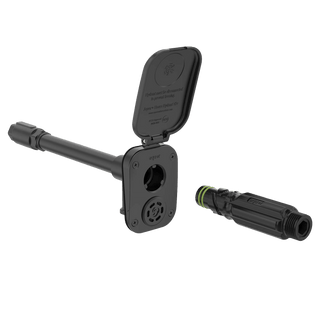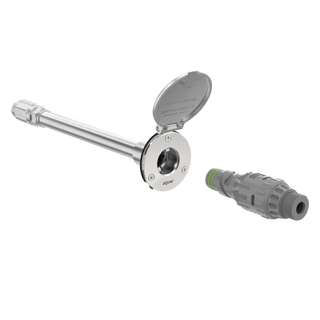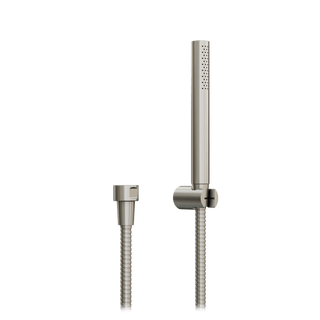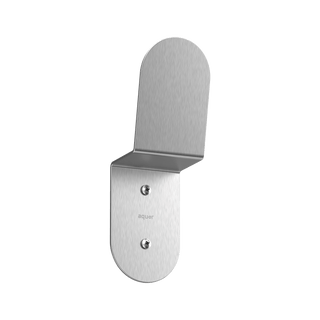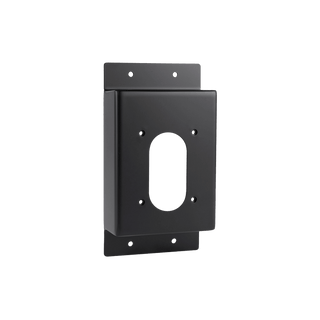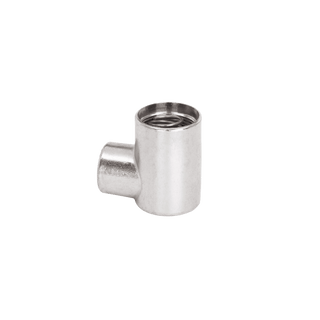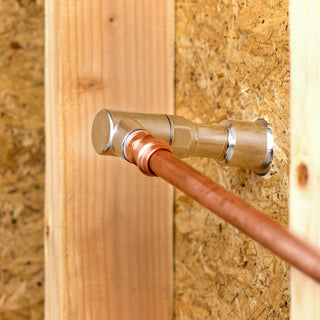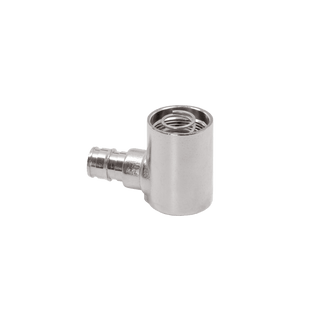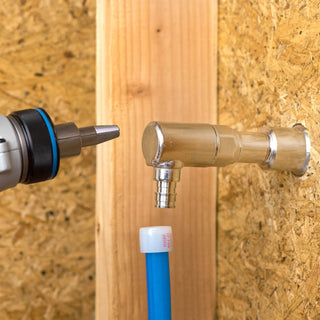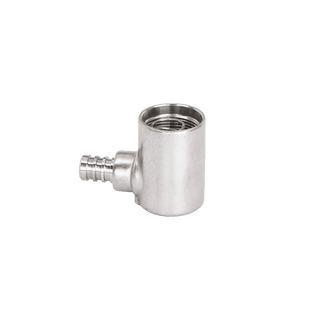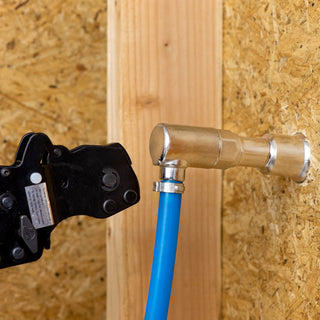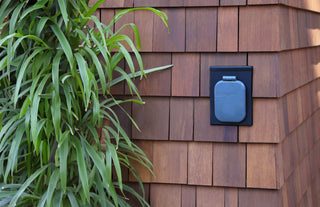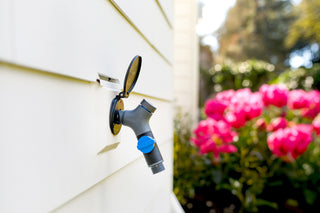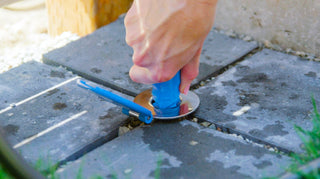Install Tip: Using the 90° Elbow Inlet
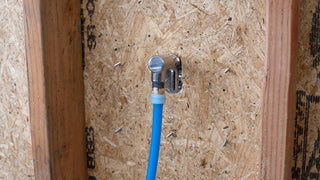
The 90° elbow inlet provides you with more options for installation.
Use it in situations where the the hydrant’s standard straight inlet would not fit. It provides two main benefits: it shortens the hydrant’s total length by 1/2″, and allows you to connect to the supply line in any direction.



With the standard straight inlet, the hydrant must be in-line with the plumbing.
This is the most common configuration. Just about every sillcock on the market comes with a straight inlet as standard, so this should be a familiar setup.

With the elbow inlet attached, your plumbing can be connected up, down, left or right.
 Hold on. Don’t plumbing stores already sell elbow inlets? What’s special about this one?
Hold on. Don’t plumbing stores already sell elbow inlets? What’s special about this one?

Yes, but they are not positionable. You will need to connect to the plumbing in a certain direction. Imagine threading on a nozzle to your hose – it will always stop in the same direction. You can add a bit of teflon tape to try and adjust the point where it stops, but it’s imprecise and requires guesswork.  With Aquor’s inlet, you can position in any direction. The brass fitting above uses tapered threads and teflon tape in order to create a tight seal. With tapered threads, you always need to tighten them fully. The Aquor inlet-to-body connection uses straight threads with a seated O-ring seal. O-rings do not require high bolting forces to seal perfectly. They seal over an exceptionally wide range of pressures, temperatures and tolerances. Once seated, they continue to seal even though some feel that they theoretically should not. In addition, they are economical and easy to use. We believe that the O-ring is one of the finest static seals ever developed. We’ve tested our seals to 400+ PSI static pressure, higher than you should ever see in a home.
With Aquor’s inlet, you can position in any direction. The brass fitting above uses tapered threads and teflon tape in order to create a tight seal. With tapered threads, you always need to tighten them fully. The Aquor inlet-to-body connection uses straight threads with a seated O-ring seal. O-rings do not require high bolting forces to seal perfectly. They seal over an exceptionally wide range of pressures, temperatures and tolerances. Once seated, they continue to seal even though some feel that they theoretically should not. In addition, they are economical and easy to use. We believe that the O-ring is one of the finest static seals ever developed. We’ve tested our seals to 400+ PSI static pressure, higher than you should ever see in a home.
Since the Aquor inlet can be rotated 360° before it starts unthreading, you can position it in any direction and be confident in a leak-proof seal.
Lastly, non-Aquor elbow inlets will add length to your hydrant.
If you have limited clearance space, note that adding a store-bought elbow inlet will require 1/2″ to 3/4″ of additional space beyond the hydrant’s total length.
With the Aquor inlet, you save 1/2″ over the standard straight inlet. That means you can install in narrower walls.
 With generic brass elbow inlet
With generic brass elbow inlet
 With Aquor elbow inlet
With Aquor elbow inlet


